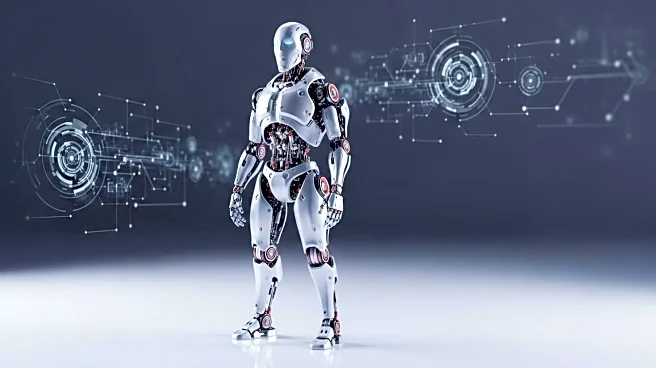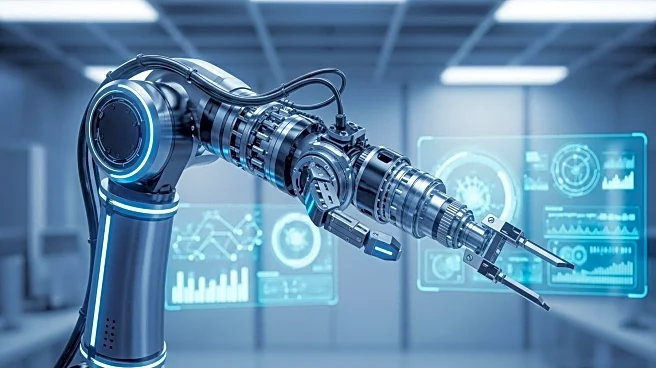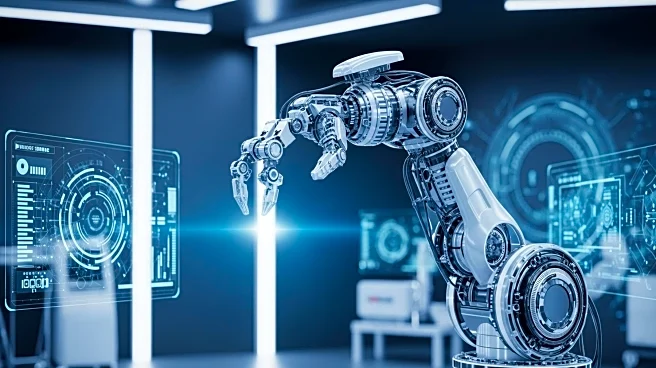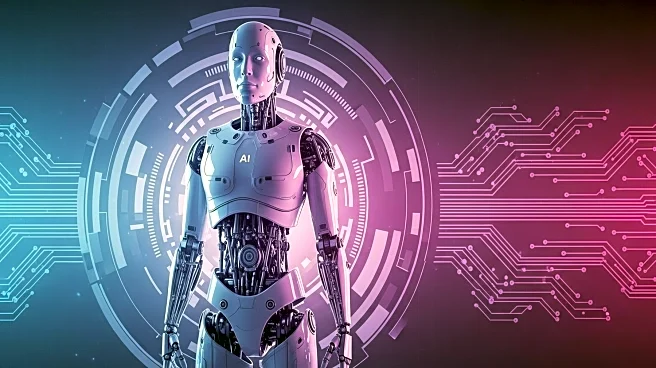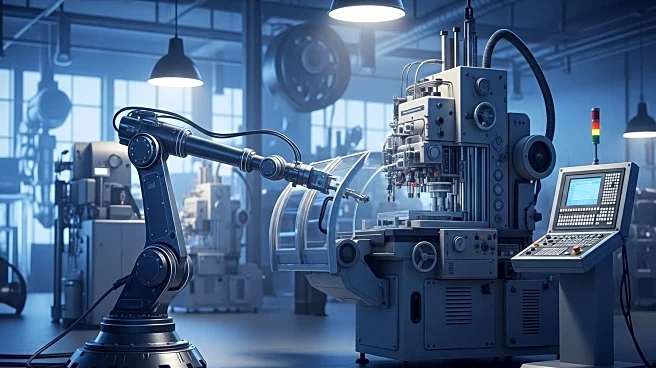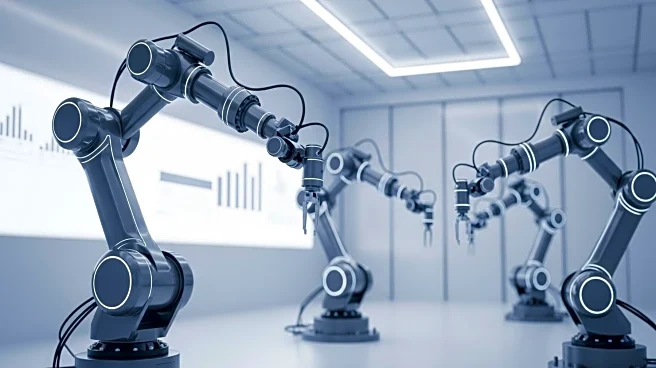What's Happening?
Boston Dynamics is enhancing its humanoid robot, Atlas, through the use of large behavior models (LBMs) in collaboration with Toyota Research Institute. The aim is to make Atlas more adaptable and flexible in performing various tasks, moving beyond acrobatic feats to practical applications like logistics. The LBMs integrate general world knowledge with specific task knowledge, allowing Atlas to perform tasks with less specialized programming. This approach involves imitation learning, where operators teleoperate Atlas using motion tracking systems to provide high-quality task training data. The partnership seeks to develop a foundational policy for movement and manipulation, supplemented by specific human training for particular tasks.
Why It's Important?
The development of Atlas using LBMs represents a significant advancement in robotics, potentially transforming industries reliant on manual labor. By creating a robot capable of performing a wide range of tasks, Boston Dynamics could revolutionize sectors such as manufacturing, logistics, and service industries. The ability to train robots using imitation learning makes programming more accessible, reducing the need for advanced robotics expertise. This could lead to increased adoption of humanoid robots in various fields, enhancing efficiency and safety while reducing labor costs. The collaboration with Toyota Research Institute underscores the importance of interdisciplinary partnerships in advancing AI and robotics technologies.
What's Next?
Boston Dynamics plans to continue refining Atlas's manipulation behaviors, focusing on achieving smooth and dynamic movements. The company is exploring reinforcement learning to enhance the robustness of these behaviors. Additionally, Boston Dynamics is investigating other data sources, such as human worker observations and synthetic data, to improve model performance. The goal is to maximize Atlas's capabilities in mobile bimanual manipulation and repetitive tasks, potentially expanding its applications in various industries. As the technology progresses, stakeholders in robotics and AI will likely monitor these developments closely, considering implications for workforce dynamics and automation.
Beyond the Headlines
The use of LBMs in robotics raises ethical and cultural questions about the future of work and the role of humanoid robots in society. As robots become more capable of performing human-like tasks, discussions around job displacement, privacy, and the ethical treatment of AI entities may intensify. The integration of language prompts in training models also highlights the intersection of AI and human communication, potentially leading to new ways of interacting with machines. Long-term, these advancements could influence societal norms and expectations regarding technology and its impact on daily life.
